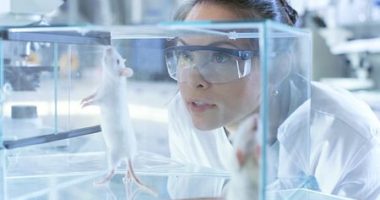Multiple Factors Seen to Underlie Bardet-Biedl Symptoms in 2 Brothers

The case of two brothers with differing symptoms but the same genetic mutation underlying Bardet-Biedl syndrome (BBS) — a rare form of genetic obesity — supports the hypothesis that genetic, hormonal, and environmental factors all interact in this disorder.
The study, “Clinical characteristics and ultra-widefield fundus image analysis of two siblings with Bardet-Biedl syndrome type 1 p.Met390Arg variant,” was published in the American Journal of Ophthalmology Case Reports.
About 25 mutations are associated with BBS. One common mutation in the BBS1 gene is known as p.Met390Arg — meaning an arginine appears instead of a methionine, two amino acids, at position 390 — and is implicated in diverse ocular and systemic (body-wide) manifestations.
Symptoms of BBS vary widely among patients, complicating diagnosis and disease management. Characteristic complications include obesity, retinitis pigmentosa (an eye condition that causes vision loss), polydactyly — having an extra finger or toe — kidney problems, and cognitive impairment.
Because of this patient-to-patient difference, some scientists argue that a more complex set of interactions determines how the disorder presents, including genetic variants and environmental factors.
Two brothers in Puerto Rico, ages 41 and 43, each with genetically confirmed BBS type 1, appear to support this hypothesis.
They had non-consanguineous (unrelated) parents and showed the same p.Met390Arg mutation, as well as four other identical variants in the genes CDH23, PEX26, CNNM4, and RP1. Both men also had high blood pressure, as well as high levels of cholesterol and triglycerides. They also exhibited severe obstructive sleep apnea, truncal obesity, and a body mass index in line with class 2 or 3 obesity.
The younger man had three additional gene variants of unknown clinical significance not shared by his brother. These occurred in genes PEX10, BBS9, and RLBP1.
He also showed insulin resistance, which can lead to type 2 diabetes, and hypogonadism (underdeveloped or abnormal male genitals). His brother was diagnosed with type 2 diabetes and had hepatomegaly, or an enlarged liver.
Low levels of the hormones testosterone and cortisol were found in the younger brother only.
Eye exams showed the younger sibling to be in relatively worse condition. Compared with his brother, he displayed more advanced cone-rod dystrophy (a type of wasting in light-sensitive cells of the eyes), more extensive bone spicules — cells that lay the groundwork for bone formation and are a hallmark of retinitis pigmentosa — and the presence of empty blood vessels, also known as “ghost vessels.”
Overall, the scientists said that differences in hormone levels and additional gene variants with unknown significance could influence the different sets of symptoms seen in the brothers.
“Our report further supports the hypothesis that BBS is a disease with genetic, hormonal, and environmental triggers interacting to produce phenotypic [manifestations] variability,” they wrote. “Although our report may not establish a definite relationship between environmental and genetic influences, their role should be explored in future studies.”




